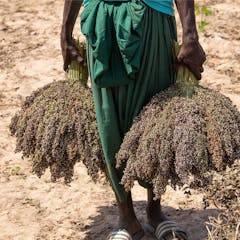
Articles on Horn of Africa
Displaying 1 - 20 of 59 articles

All states have limited security capabilities and they generally prioritise them close to home. where it matters.

Somalia has demanded that a memorandum of understanding – which would see Ethiopia gain access to the Red Sea via a Somaliland port – be ripped up.

The shockingly poor exam results indicate underlying structural issues that extend far beyond the realm of individual student performance.

Ethiopian Prime Minister Abiy Ahmed claims his landlocked country has a right to demand maritime access to a Red Sea port from its neighbors in the Horn of Africa − Somalia, Eritrea and Djibouti.

Hundreds of rivers are shared between two or more countries – this could be a source of cooperation or conflict.

Musicians established themselves in the US, where they continued to practice their cultural life, which flourished.

Sudan’s current conflict will have economic, social and political ripple effects across a number of countries

Sudan’s location and natural resources have attracted international partners keen to benefit either geopolitically or economically.

Instead of the deluge of external interventions, ways must be found to build resilience from below, drawing on local practices and networks.

It is not the drought that causes disease outbreak, but instead the way society deals with dry conditions.

African leaders must take radical actions to strengthen the continent’s voice and participation in future events.

Conservation that places less emphasis on who may or may not use a piece of land could result in better outcomes for people and wildlife.

High intensity rain has actually increased, which is topping up underground water stores.

States with more capacity, more political inclusion and that make good use of foreign aid tend to see better outcomes.

The looming Somalian famine might be the first in a string of back-to-back catastrophes, says an expert.

As droughts intensify, how can we increase crop production in a sustainable way? This is a multidimensional scientific and societal challenge to ensure future food security.

The African Union needs to launch a credible, robust mediation process with mutually accepted mediators.

Kenya’s new president needs to forge closer ties with regional heavyweights to create a balance of power that favours his country.

The project promises improved living condition for citizens and fosters ambition for international recognition.

Ethiopia’s direct engagement with Somalia’s regional governments will likely weaken the prospects of restoring a functioning Somali state.
